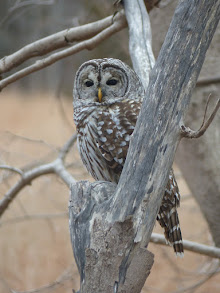Ideally I should have posted this on St. Stephen's Day (December 26th according to the Western Christian calendar), but the elements didn't come together until this week.
Back in December my wife and I went to our local music venue for a performance by two Irish-born musicians, John Doyle and Mick McAuley. The concert was billed as "An Irish Christmas" and was accompanied by a CD entitled This Christmas Time. At one point early on in the evening one of the two men (I think it was John Doyle) joked that birds were going to be mentioned in every song that night, and while this didn't turn out to be literally the case there were in fact two notable songs about wrens, specifically, about the Eurasian wren (Troglodytes troglodytes), which we don't have here.
The first song, "Gleann na n-Éan," was a Doyle original, although the story it tells dates back at least to Plutarch (who attributed it to Aesop). The birds gather to choose a king, the crown to be awarded to the bird that can fly highest. The boastful eagle outlasts all the other contestants, but just as he proclaims his triumph the wren, who had ridden to the top concealed on his back, proclaims that he in fact is the highest.
The status of the wren (or in some cases the similarly sized goldcrest, which sports a gold "crown") as king of the birds persisted through the Middle Ages, and a peculiar custom developed of ritually killing a wren every year on St. Stephen's Day, parading it through town on a pole, and begging for money to pay for its interment. The second wren song performed that evening was thus a version of the ditty that was traditionally sung as the procession moved from door to door. (The practice of ritually killing a king at the end of each year did not go unnoticed by Frazer in The Golden Bough). The custom still persists in parts of Ireland, although thankfully no actual birds are now harmed.
Those two songs were still in my head when I came to the crossword puzzle in the New York Times for January 18th, where I found this clue:
48 Across: Avian symbol of good fortune in Celtic cultureIt didn't take me long to fill in the four letters of the bird's name. And then I remembered another curious appearance of the Eurasian wren, in Elizabeth Hand's story "Pavane for a Prince of the Air" (from Saffron and Brimstone) which is set in Maine. Hand's tale follows the terminal illness and eventual death of a man named Cal, an old friend of the narrator. After Cal dies and is cremated, his grief-stricken wife and the narrator sift through his uncrushed ashes, picking out fragments of bones and the remains of trinkets that had been placed in the coffin. When they're done they go outside and shake out the sheet bearing the fine particles that are left behind. (The story makes explicit reference to "The Juniper Tree," where the bones of a murdered child are gathered up and placed beneath a tree, only to return to life in the form of a brilliant bird.) While the widow travels the world, scattering portions of Cal's ashes and seeking his next incarnation, it is to the narrator that the title "prince" or king seems to reappear, in the form of a bird not found in Maine at all.
Still, the bird is here. I researched it online, and in some books of folklore I have, and learned that the European wren is the bird that was the subject of the annual wren hunt, an ancient pre-Christian ritual of death and resurrection, still practiced in obscure parts of Ireland and the Isle of Man. It is a creature known for its cheer and its valor, its bravery suiting a bird of far greater size; and also for its song, which is piercingly sweet and flutelike, carrying for miles on a clear day.As the narrator continues to write at her desk, the bird watches her work. The story concludes:
It sings, day after day after day, and sometimes into the night as well. I never cease to marvel at the sound.





2 comments:
On "Mister Rogers," King Friday has a bird called Troglodytes Aedon. King Friday, King of the Birds. Coincidence?
Hmm, interesting. Apparently that's one of our native wrens here.
Post a Comment